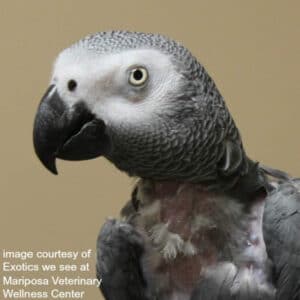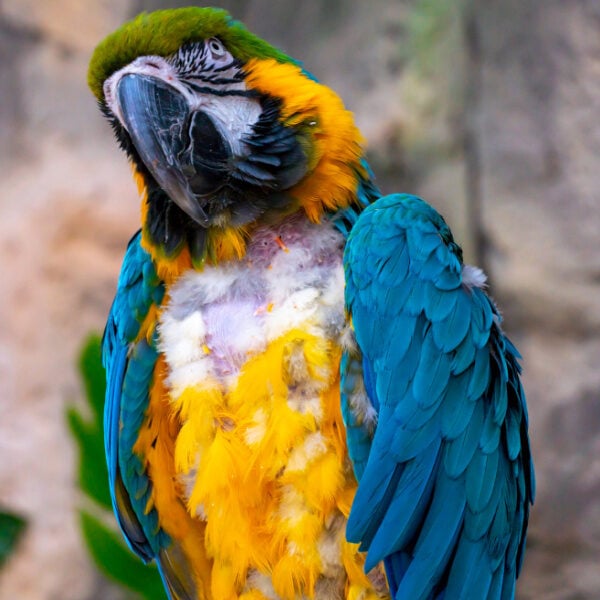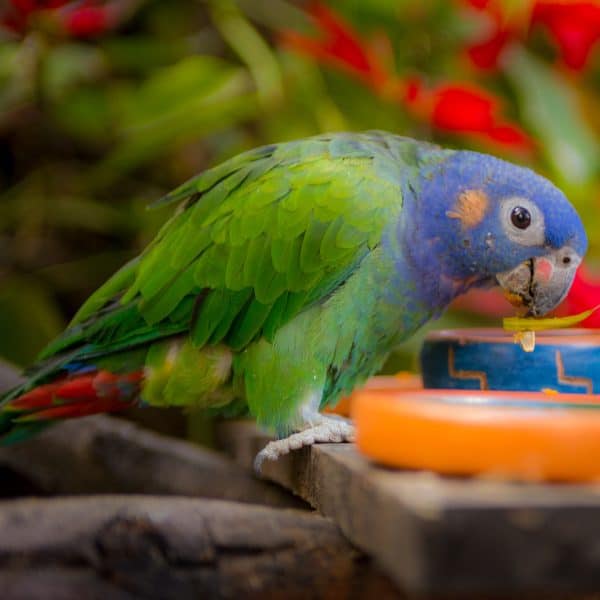
Are Bird Food Pellets Right for My Bird?
Last Updated on by Mitch Rezman
My sweet little lovebird eats about 4 different varieties of pellets, some dried tiny fruits and vegetables, and shows little interest in seed foods. She gobbles her bedtime snack of FRESH Millet (never bagged) and will eat almost anything I eat.
Grapes, melon, carrots, chicken, pasta, cookies, cereal, and drinks filtered water. She sleeps lying down in her tent in her cage, and spends her days on her private playpen at the opposite end of the room where her cage is. She plays with anything I offer her, and knows Give, Put, Get, Stay, and most everything she understands. I raised her from 7 weeks. She is my second lovebird.
Neither bird ever showed any form of anger, biting, destructiveness, etc. I can pick up her food dish while she’s eating in or out of her cage, and she would never think of biting. She is extremely social, loves changes in her cage or playpen, loves going in the car, and has always been happy and secure when he travel. She also has a great love for toys that move, and/or make sounds.
My one request of the companies which sell pellet food would be small jars or 1 pound or less bags. It’s simply too expensive to buy a bag and find your bird won’t eat it.
Many thanks, Sue M. and Blueberry
Hi Sue
Thank you for your thoughtful comments and great pics of Blueberry. They are appreciated. FYI, Harrison’s offers USDA organic bird food pellets in one pound bags found here
So what’s the deal with parrot food pellets?
They’re popular for many reasons but on the flip side, there are no pellet trees in the rain forest. With all the bird foods on the market, why would you select pellets over a seed diet? Can a bird survive on an all pellet or all seed diet?
Parrot food pellets came about to provide better nutrition for caged birds. Although many soft bill birds (like canaries & finches) have been living on a seed diet for years. Larger birds require a more balanced diet. Early on, parrot food consisted mainly of sunflower, peanuts, corn and dried chili peppers which made it high in fat and except for the chili peppers and there wasn’t a whole lot of nutritional value. It was also thought at the time feeding your bird fresh fruits and mixed vegetables would cause diarrhea. Further, parrots in the wild don’t eat a lot of dried seeds. It would be very difficult to duplicate a wild parrots diet unless you want to import ingredients from different continents. Things like insects, flowers, plants and tubers. At-the-end-of-the-day many seed diets are typically deficient in vitamins, amino acids and minerals.
Choosing the right parrot food pellets can be a daunting task. The list of brand names and ingredients is long. One of the first things you want to look for is that you’re buying factory-sealed bags. If you receive your food in a Zip-Loc bag or buy bulk bird food at the pet store, the origin of the food is unknown. Why is this important? Let’s start with freshness. Factory sealed bags of bird food have expiration dates, the date you should no longer serve the food to your bird. There’s no way of telling the date your food expires with “re-pack” bird food. The food may have been exposed to other birds. A benefit some manufacturers add like Hagen bird food & Goldenfeast They extract all the air out of their food and inject CO2 (carbon dioxide). This guarantees their food will be bug-free. Yes bug free. All bird seed contains bug eggs which may or may not produce live bugs or moths in your bird food over time. Score one for bird food pellets – generally bug free.
According to Mark Hagen, prime developer of Hagen bird food “More pelleted food needs to be eaten by birds to maintain their weight, in fact almost twice as much volume as the high calorie bird seed kernels. Fat has more than twice the energy value per gram than protein or carbohydrates and this accounts for the energy differences. The cost of feeding a bird is not based on the price per kilogram of food but the price per kilo-calorie of digestible energy. Extruded foods are able to incorporate more efficient fat levels into the texture of the “kibble” read more on Avian Nutrition: Trends and Philosophies here. Which brings us to the money thing. I feel overall parrot food pellets give your bird a good bang for your buck. Your bird can live a long and healthy life on pellet bird food without seeds. Harrison’s parrot food pellet diets are fully organic and are especially useful for birds that are molting, over or under weight, highly active, live in a colder area or recovering from an illness.
Parrot food pellet manufacturers can more precisely target different species nutritionally. Pretty bird parrot food pellets offer some species specific pellet blends like Pretty Bird African Grey and (large) Conure specific food. Roudybush pellet bird food offers each formula in different size pellet “pieces” depending on the size of bird you have. Scenic pellet bird food was originally developed for parrots kept in zoos. Zupreem offers several different varieties of pellets that can appeal to a wide variety of birds.
Parrot food pellets are by far and away cleaner to feed than a bird seed diet. If you feed your bird a seed diet and if you look under your bird’s cage, what do you see? Unwanted seeds and lots of seed hulls. By the way our most popular alternative to an all seed diet for those birds that won’t embrace a pellet diet alone should try Tropimix seed fruit and pellet blend. The seeds in this yummy and nutritional hulled seed, fruit, veggie and pellet mixture have no hulls making it a very clean bird food blend, almost 100% of the food is edible. What’s interesting, seed blend ingredient panels include the meat and the shells of the hulls. In that parrot’s hull seeds before eating them, your birds is receiving lower fiber levels that are actually noted on the bags.
Overall if you’re considering a pellet diet for your bird, why not try using the pellets as a base 50%-70% pellets, some veggies fresh or frozen, legumes (beans), fresh fruits, table foods (in moderation), and some seeds never hurt.
Author Profile
Latest entries
 The Traveling BirdJune 26, 2025Can You Name 5 Parrot Species That Are Living Wild in the USA?
The Traveling BirdJune 26, 2025Can You Name 5 Parrot Species That Are Living Wild in the USA? Bird BehaviorJune 26, 2025How is it Parrots Are Problem Solvers Social Animals and Even Use Tools?
Bird BehaviorJune 26, 2025How is it Parrots Are Problem Solvers Social Animals and Even Use Tools? Bird & Parrot AnatomyJune 25, 2025How a Tiny Chemical Modification Makes Parrots Nature’s Living Paintings
Bird & Parrot AnatomyJune 25, 2025How a Tiny Chemical Modification Makes Parrots Nature’s Living Paintings PigeonsJune 20, 2025How Do Parrots Thrive in Cities Outside Their Native Habitats?
PigeonsJune 20, 2025How Do Parrots Thrive in Cities Outside Their Native Habitats?


